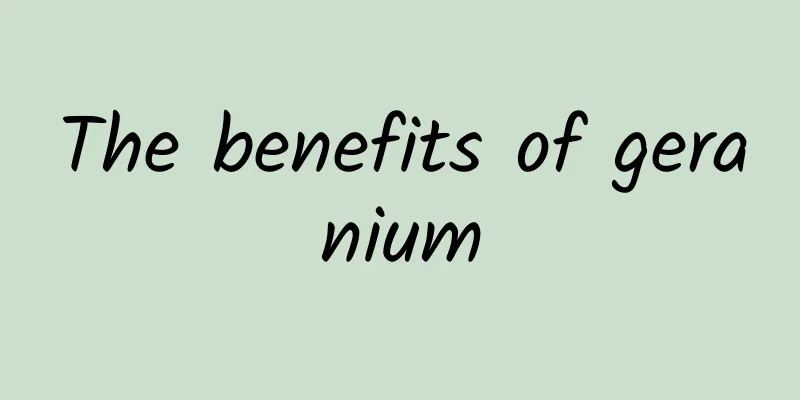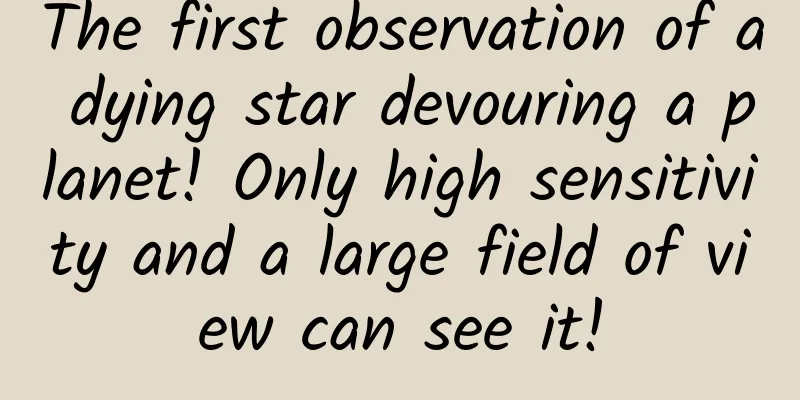The benefits of geranium

|
The name of Gynura odoratum is relatively unfamiliar to many people, and they don't even know what Gynura odoratum looks like. Gynura odoratum is a traditional Chinese medicinal material that can be taken orally or applied externally. As a relatively mild medicine, Gynura odoratum has the effects of dispelling wind and dampness, killing insects, and relieving mental stress. Although Gynura odoratum has no toxic side effects, it should be used in moderation during use. The benefits of geranium 1. Efficacy of using it as a traditional Chinese medicine. This plant is a flower with a spicy taste and warm nature. Its main effects and functions are to dispel wind and dampness, promote qi circulation and relieve pain. It also has an insecticidal effect. It has a good effect on the treatment of rheumatism, hernia, scrotal eczema and scabies. In terms of usage and dosage, it can not only be decocted for oral administration, but also used to soak wine. For external use, it requires an appropriate amount of decoction for washing or mashing for application. It is recorded in "Chinese Materia Medica" and other books. 2. The therapeutic effects on skin and body. Many of you may know that geranium can be used to make essential oils and cosmetics. In fact, it can also balance the skin's secretions and has a good effect on eczema, burns, shingles and frostbite. Pale and lifeless skin will become rosy and vibrant after using geranium. It can also regulate the body's hormone secretion, improve premenstrual syndrome and menopausal problems, and strengthen the lymphatic system, remove toxins and increase immunity. 3. Spiritual and psychological effects. Geranium can also be used as a tonic for the nervous system. This plant can soothe anxious and depressed moods, relieve mental stress, and has a good effect on depression. At the same time, filling the water container of the aromatherapy burner with clean water and adding 3 to 5 drops of geranium essential oil can create a sweet and harmonious atmosphere in the room, making it more friendly, achieving a happy mood, and making the body and mind comfortable, while also nourishing the body. About Pelargonium 1. Geranium is a perennial herb or shrub that can grow up to 1 meter tall. The stem is erect, woody at the base, fleshy at the top, densely covered with shiny soft hairs, and fragrant. 2. Leaves are alternate; stipules are broadly triangular or broadly ovate, 6-9 mm long, with acute apex; petioles are nearly as long as leaf blades and pubescent; leaf blades are nearly circular, cordate at base, 2-10 cm in diameter, palmately 5-7-lobed to the middle or near base, lobes are oblong or lanceolate, lobule margins are irregularly serrated or serrated, and both sides are covered with long rough hairs. 3. Umbels are opposite to leaves, longer than leaves, with 5-12 flowers; bracts are ovate, pubescent, with green hairs on the edges; pedicels are 3-8 mm long or almost sessile; sepals are oblong, green, 6-9 mm long, 2-3 mm wide, acute at the apex, and 4-9 mm long; petals are rose or pink, twice as long as sepals, obtuse at the apex, and the upper two are larger; stamens are nearly as long as sepals, and expanded at the bottom; carpels are pubescent. |
<<: The efficacy and function of Curculigo root
>>: The efficacy and function of Chinese medicine tortoise shell
Recommend
Three comparative data tell you why the elderly should get the new coronavirus vaccine?
On May 8, Beijing reported a critically ill patie...
I am a terrifying snake, but I am about to become a meal! | Expo Daily
Snake, I'm about to become a meal Environment...
If you don’t stock up on vegetables during home quarantine, can you support yourself by growing vegetables on the balcony?
Review expert: Wang Guoyi, Postdoctoral Fellow in...
Can listening to music improve sleep? Come! Let's listen to hypnotic songs, but be careful of "earworms"
We spend one third of our lives sleep Good qualit...
The efficacy and function of cilantro stems
Chinese medicinal materials are very effective in...
The more I apply a mask, the drier my skin becomes? What’s the problem?
Peeling, flaking, and enlarged pores? If your ski...
What are the effects and functions of white aconite
Medicines are used to help us treat diseases. Dif...
The efficacy and function of Niulong grass
The efficacy and function of the traditional Chin...
The efficacy and taboos of Pingyin Rose
Pingyin County produces roses, and its cultivatio...
The efficacy and function of Gastrodia elata
Gastrodia elata seeds are a very familiar medicin...
The cat brought the mouse to its owner. Is this a way of repaying the favor? The truth is different from what you think!
Whenever an earthquake occurs, there are always m...
The Mongol Empire was powerful, but the Mongolian wild horses had a rough life. What was the speed of the Arabian horses?
"Success at the first sign of success",...
Is this sport actually an essential survival skill for the "Crazily Croods"?
In 2024, the world's attention will once agai...









